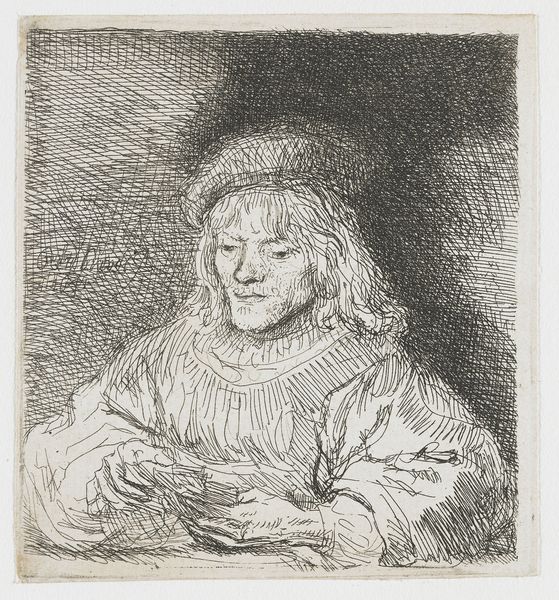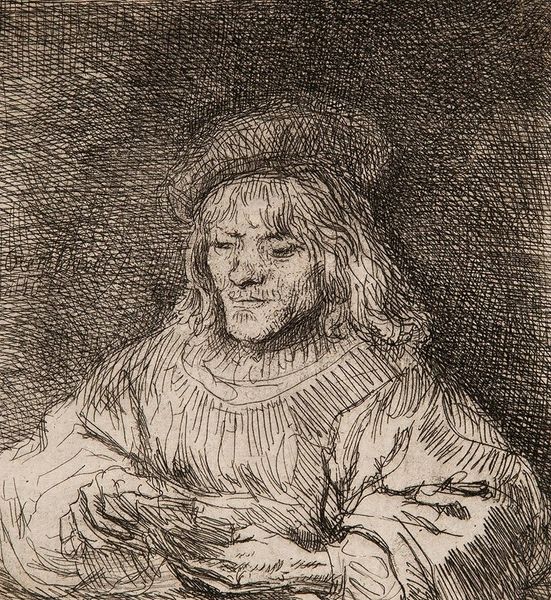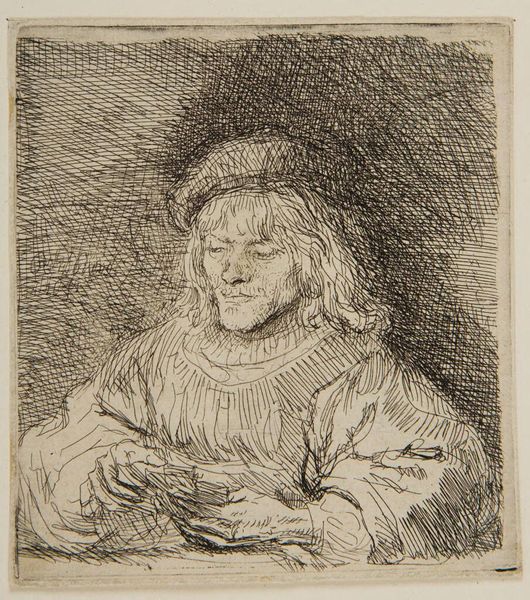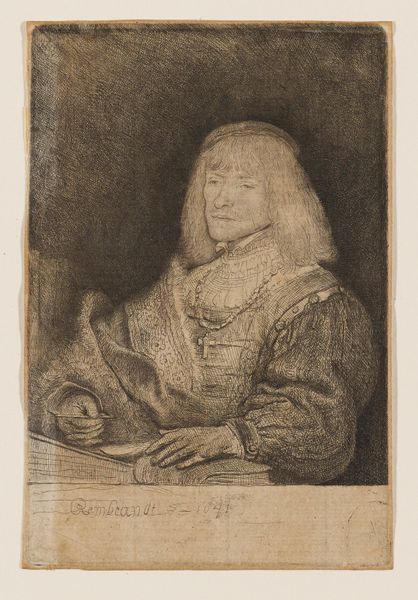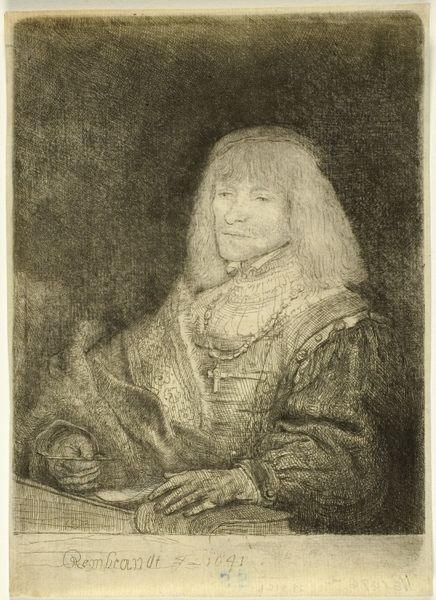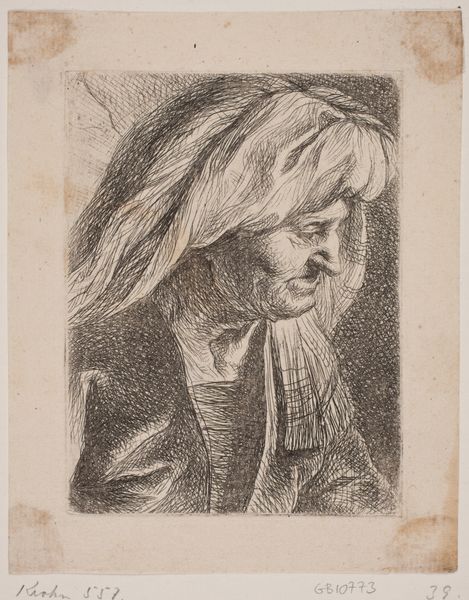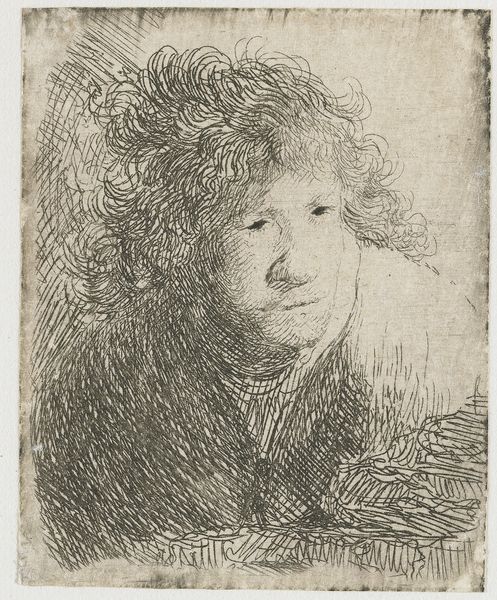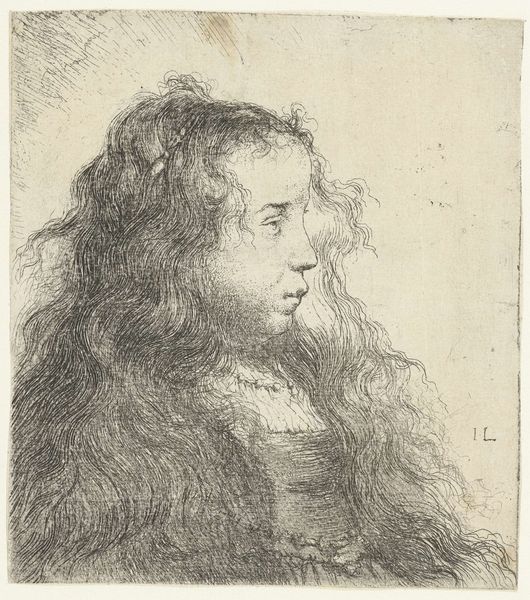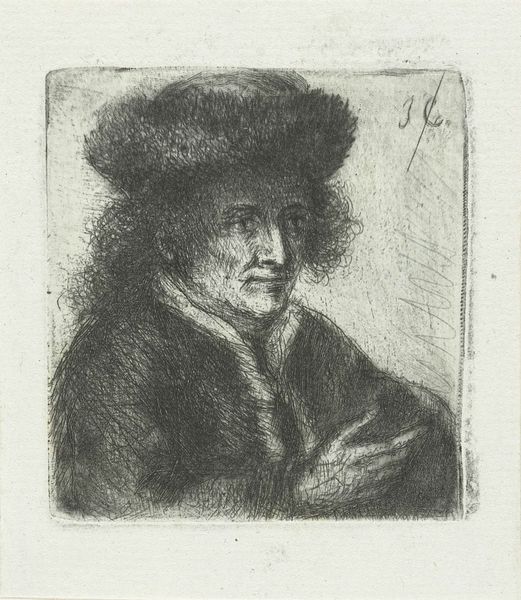
print, etching
#
portrait
#
baroque
# print
#
etching
#
pencil drawing
#
genre-painting
Dimensions: height 90 mm, width 83 mm
Copyright: Rijks Museum: Open Domain
Curator: Looking at "The Card Player" by Rembrandt van Rijn, created in 1641, an etching housed here at the Rijksmuseum. What captures your attention first? Editor: The profound sense of isolation, undoubtedly. The figure is almost swallowed by the dense, dark hatching, the cross-hatching seems to emanate a mood. Curator: Indeed, the shadows here are significant. Card games have historically been associated with fate, chance, and the potential for deception. This figure's focused gaze and downturned head evokes internal reflection, the sense of weighty contemplation. Do you think there might be other emotions involved beyond reflection? Editor: There is an intimacy despite the shadows, wouldn’t you say? Rembrandt seems to capture him at his most unguarded, despite the conventional association of cards to swindle or cheat. He looks… almost childlike. The etched lines work really nicely around his garments and head, it really stands out how dark the figure looks against that pure white background, giving the figure further weight within the artwork. Curator: Absolutely, Rembrandt excelled at imbuing his portraits with raw human emotion. And remember, he was a master of the etching technique. Through lines, and the layering of those lines, he's not just creating an image. He's revealing character. The fact it’s genre painting really allows viewers to place their own sentiments within it, without having the expectation that they'd have on portraiture or landscape. Editor: It’s compelling how a scene that, without proper perspective, may be linked to greed is rather contemplative through visual analysis and cultural understanding of symbolisms. I appreciate how the darkness amplifies it further and provides visual stimulus while pushing to further reflect upon these themes that relate to fortune. Curator: Considering both technique and potential symbolism I feel we see both the intimate personal sphere and the echoes of human behaviour. I like that ambiguity in meaning that doesn’t dictate its moralistic message. Editor: Likewise. It’s in those moments of internal conflict that true introspection arises.
Comments
No comments
Be the first to comment and join the conversation on the ultimate creative platform.
